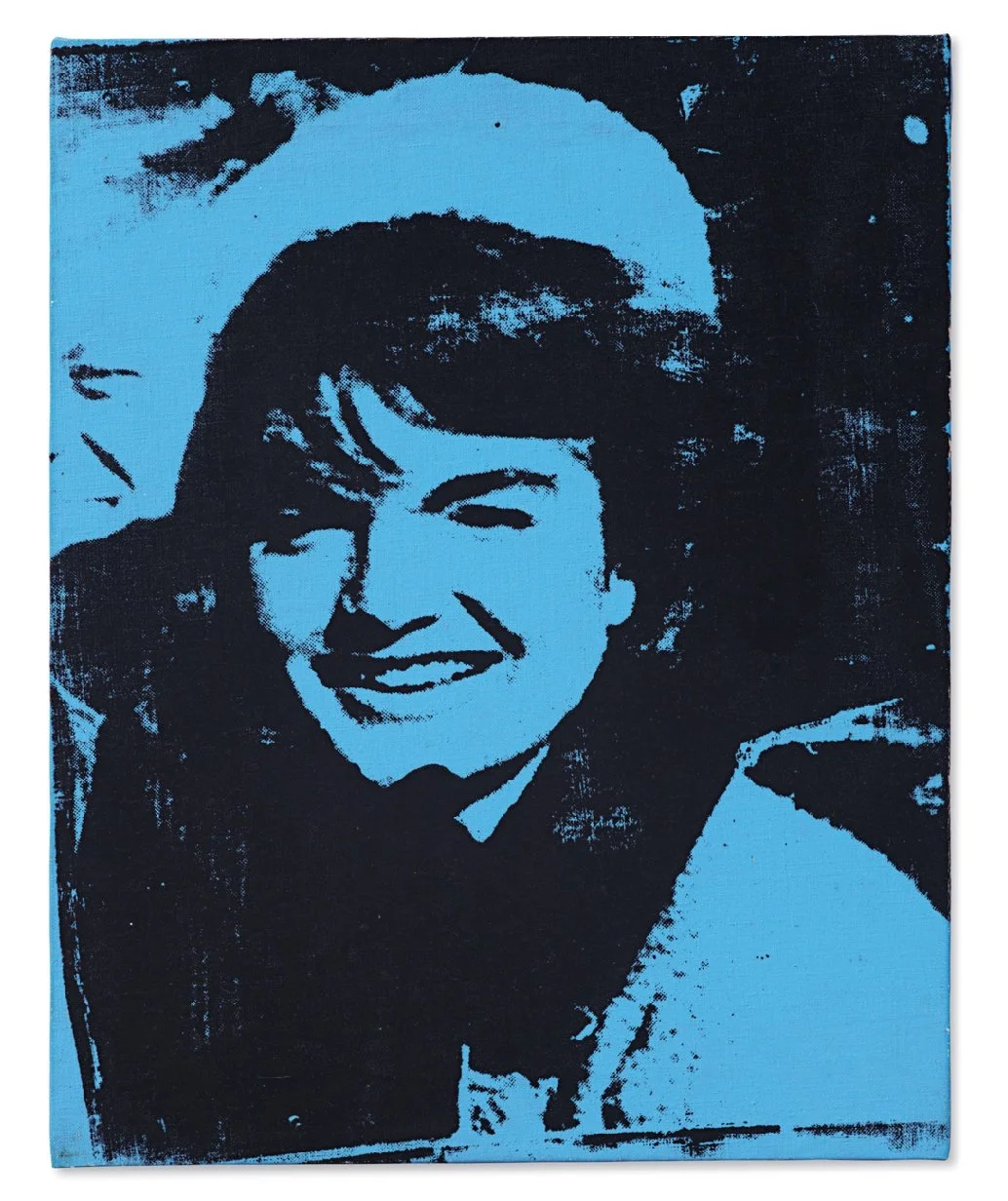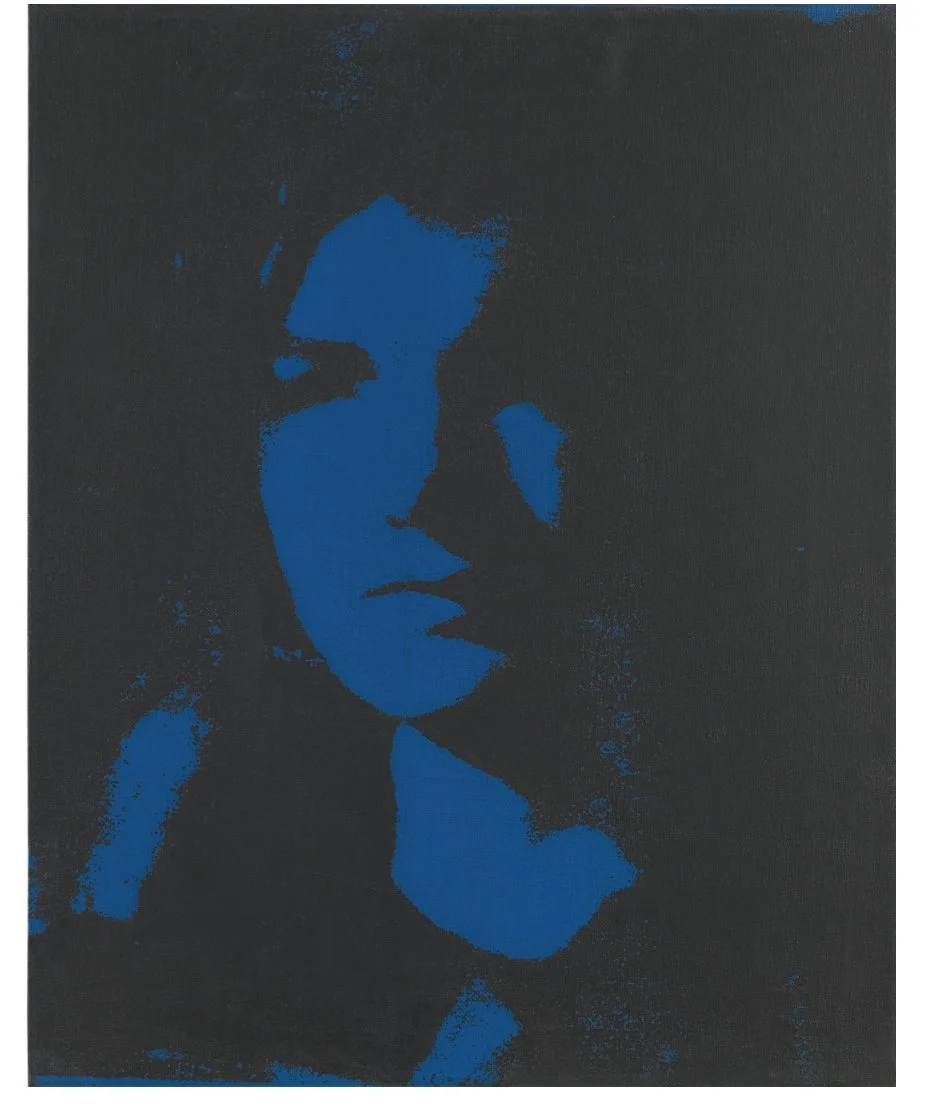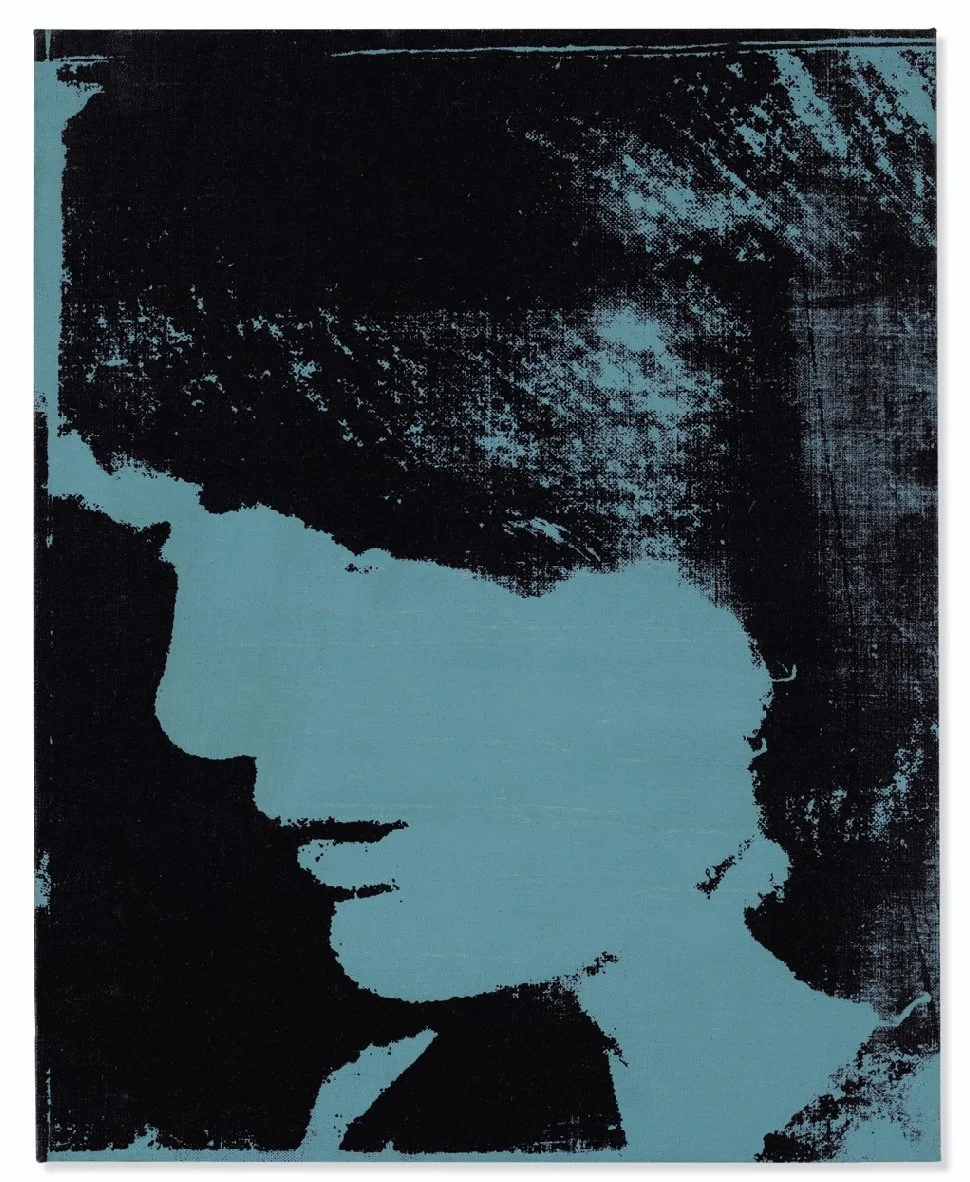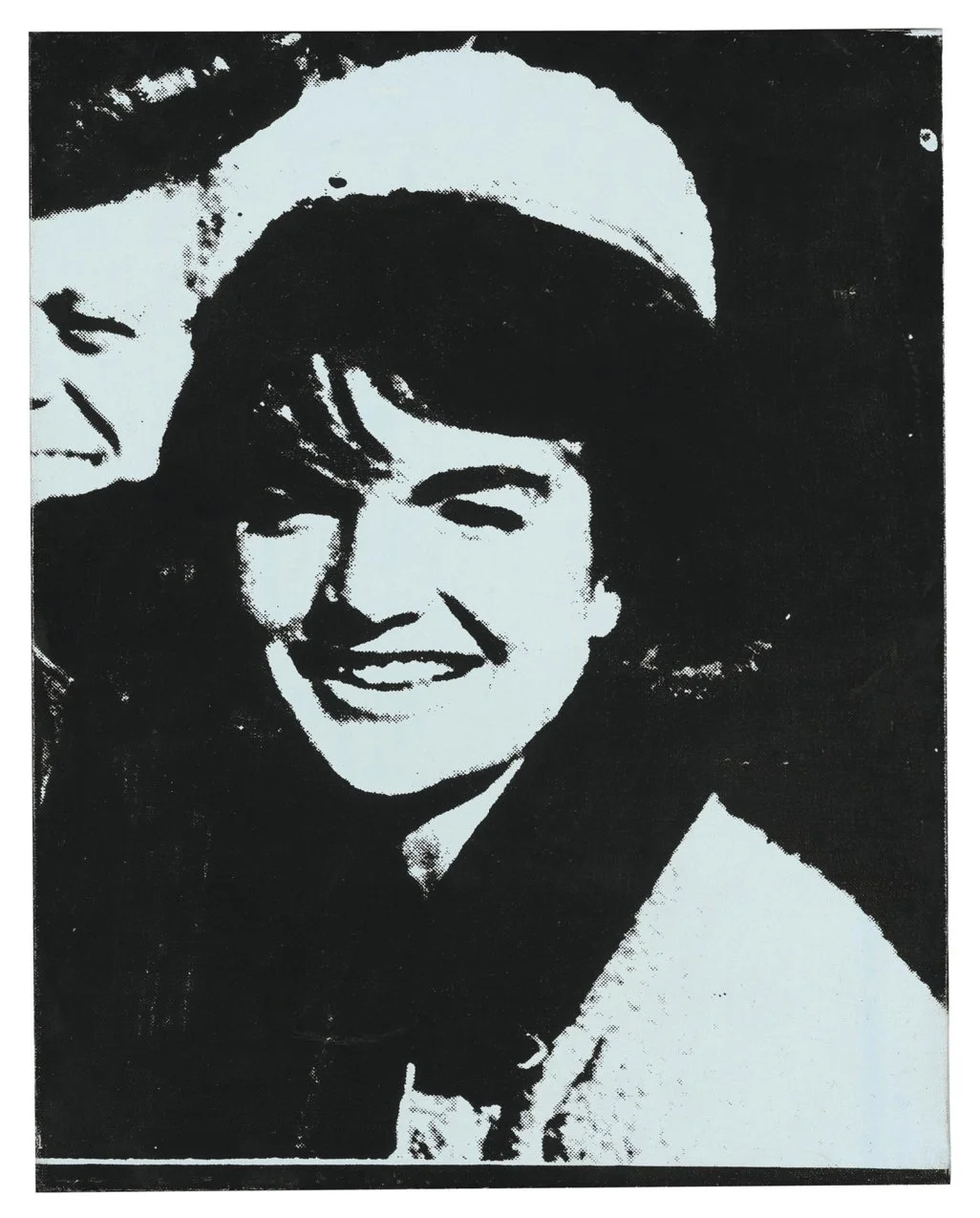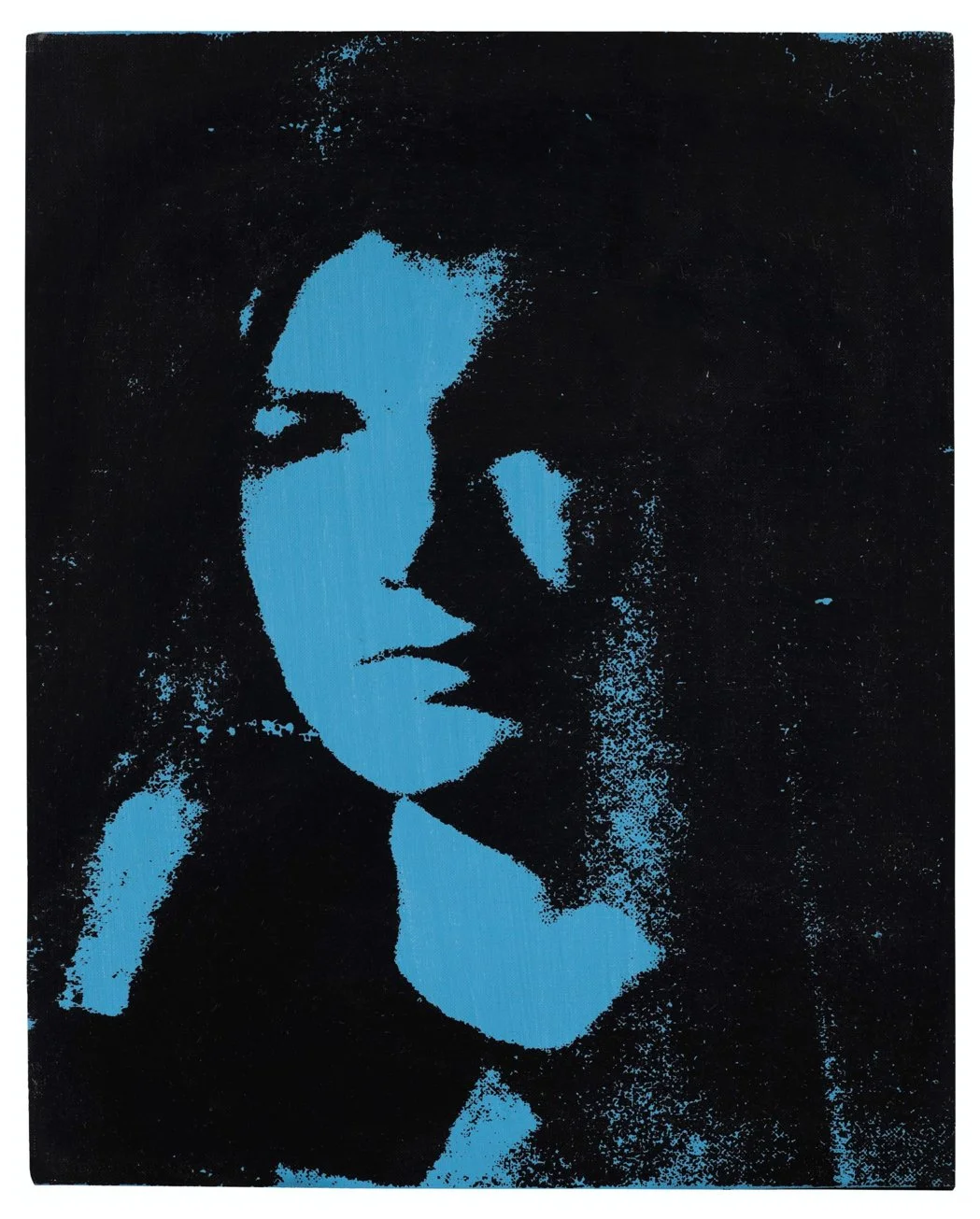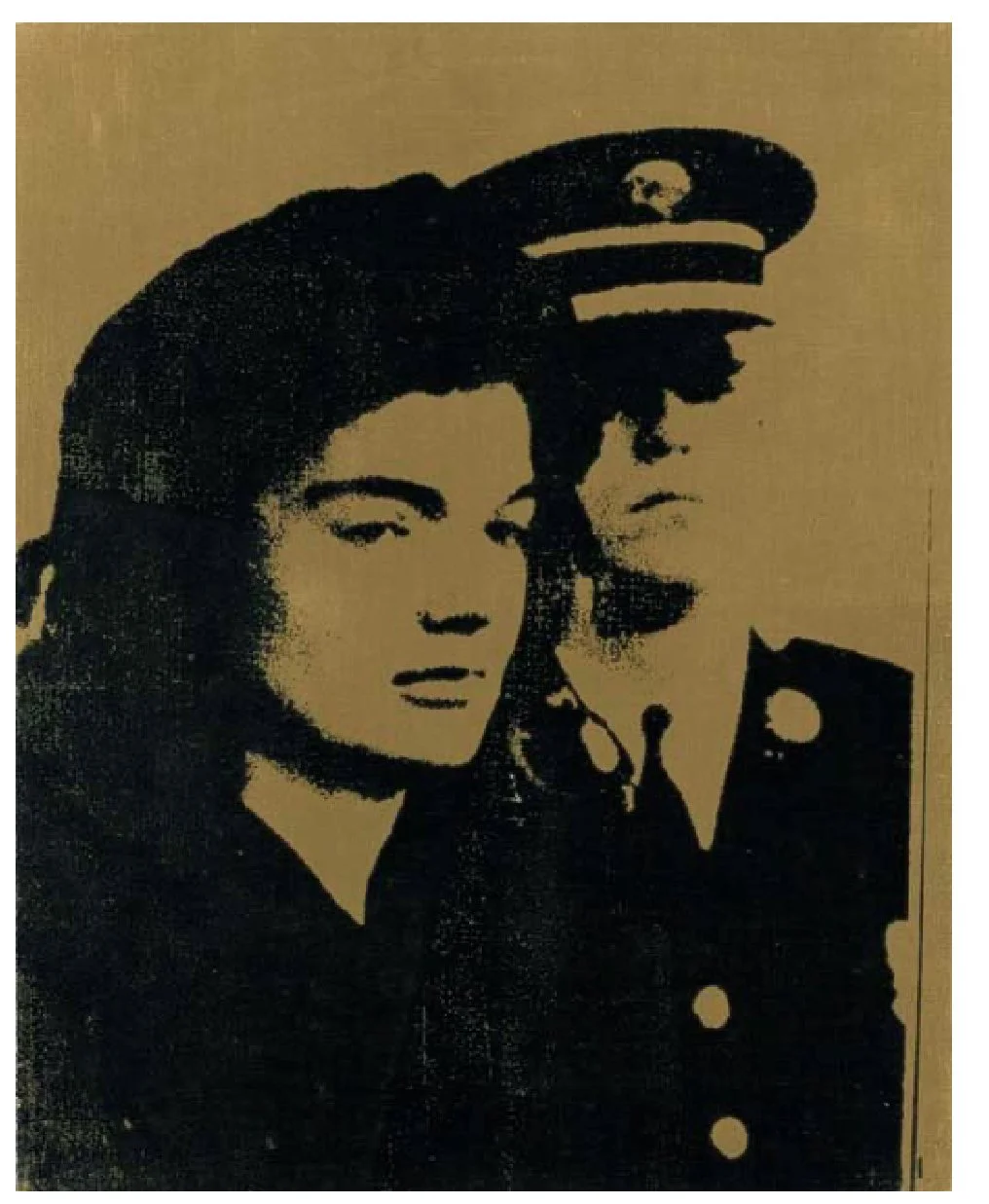Andy Warhol · How do you know when one painting is better than another?
Today we're going to look at Andy Warhol's iconic Jackie series from 1964. As a collector, there's a lot to choose from. You've got about 300 single Jackie paintings: different color ways, different techniques used in the screens, and eight different images. Some before the assassination, some after. They all carry their own kind of different mood.
Painting number one is a painting that I sold for a collector a few years ago, a very strong example. You get this ruddiness in the screen, which concretizes the event in history, as if it's an image that's been played in a film strip too many times. This image was played over and over and over again on the news. You have Jackie looking a little bit off camera, as if she's hiding from the viewer. That gives this painting a push-pull with that close crop of her, and yet she's kind of backing away.
Andy Warhol
Jackie, 1964
Acrylic and silkscreen ink on canvas
Painting number two, is the only one that has JFK, of the eight images that Warhol used. He's just off her shoulder in the background. Not that visible, but very present. That is a big plus for this particular image. She is pictured as the smiling Jackie before the assassination, in this kind of Camelot mode with the pillbox hat and the Chanel suit, as a lot of people think of her. But the really great aspect of this painting is the temporal nature of it.
Andy Warhol
Jackie, 1964
Acrylic and silkscreen ink on canvas
If you think about Michelangelo's David, what is the great aspect of that particular work? It's the psychology of being not in the moment, but right before the moment. And that is why this is a special painting, because the blue sets the future. We all know it's going to happen. She doesn't. But the image itself is in the present.
And so you get this conflation of the two. That is what makes it a very dynamic image. And if I were advising a collector on this, I would be headed for painting number two.

